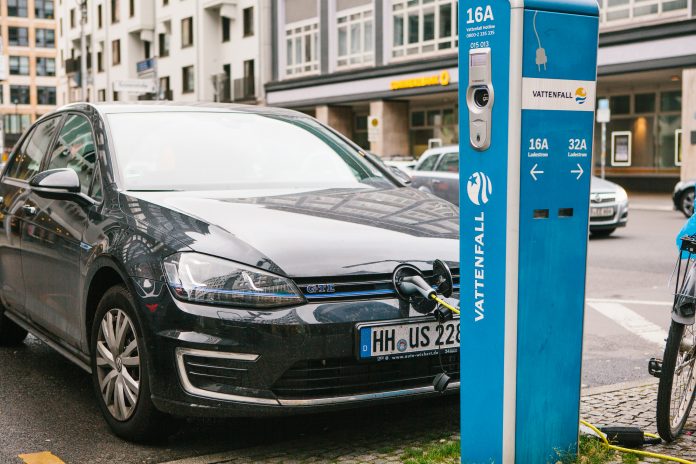Here, Mike Brown, Director of Industry Collaboration & Strategic Partnerships at the University of Salford, details the recent developments in electric vehicle innovation and charging infrastructure
2020 is going to be a very unpredictable year. From the perspective of the global automotive industry, the COVID-19 pandemic has tipped the world on its head, exposed the dangers of limited supply chains, and seen devastating drops in both demand and supply. The economic repercussions are going to be with us for years and we don’t yet know how this will impact the automotive industry in the near to mid-term.
That said, the UK government’s deadline of banning the sale of new petrol, diesel, and hybrid vehicles is just 15 years away; a relative short hop, skip and a jump away for the automotive original equipment manufacturers (OEMs). Some 13 other countries have also set deadlines to end these sales, including; Norway for 2025, Germany and India for 2030, and China has an official target of 2040. Combined with the pressures of climate change, these deadlines are providing motivation and focus for the global automotive industry.
Battery development
Developments in 2020 will see tangible and significant progress in a few key areas that will lead to the much talked about tipping point; the point where the purchase price of an electric vehicle (EV) reaches parity with internal combustion engine cars. Front and central to this is battery energy density; the amount of energy that can be stored in a battery of a given mass (weight) which then delivers the vehicle range.
EV batteries are predominantly lithium-ion and the EV with the best range is currently the Tesla Model S (long range) with a reported real-world range of 325 miles on a single charge. However, If Tesla can meet their 2020 shipping date for its new Roadster, this year will see the production of an EV (albeit an expensive one), deliver a real-world range in the region of 600 miles.
These range figures will increase as battery technology is set to make some significant and imminent leaps forward. In March Samsung announced a major breakthrough with a solid-state battery, whilst Samsung said its prototype could potentially deliver up to 500 miles on a single charge. The technology, the researchers claim, could also allow for batteries half the size of current lithium-ion units, thus delivering significant advances in energy density.
Battery technology
Tesla is also working on bringing new battery technology to market: In 2019, Tesla acquisitions included Maxwell Technologies (experts in super-capacitors), and Hibar Systems (experts in high-speed processes for producing batteries). Tesla will make further announcements in their ‘Battery Day’ (at the time of writing this was planned for April) that, in the words of Elon Musk, will “Blow your Mind”.
Reaching the tipping-point could see electric vehicles ‘crossing the chasm’: Globally, sales of EVs is still within the ‘Innovator’ phase, with a few countries such as Norway in the ‘Early Adopter’ phase of technology adoption. However, once the purchase-price reaches parity with traditional diesel and petrol cars, the wider general public will take EVs well and truly into the ‘early majority’ phase of the Technology Adoption Curve.
Fig 1. The technology adoption curve. Adapted from Slowik & Lutsey (2016), “Evolution of incentives to sustain the transition to a global electric vehicle fleet”
Another development that will help grow EV adoption is a wider network of charging points. One company leading this charge (sorry) is Gridserve, who has started construction of the first 100% EV dedicated electric charging forecourt near Braintree in Essex, which is scheduled for completion later this year. The company has also announced that it’s on track to open a network of 100 of these Electric Forecourts across the UK.
Home charging
Unlike petrol or diesel cars, EVs can be ‘filled up’ when parked, either at home, work, or increasingly in dedicated EV parking bays. When you consider the average daily commuter trip is around 10 miles, an EV is clearly a viable option, (again, once the tipping point and parity in price is reached). For those drivers who travel greater distances, the growing network of EV charging points will help enforce safety-breaks in driving; the RAC recommend a minimum 15 minute break every two hours. With an increasing number of sophisticated apps on the market to locate EV charging points, drivers can now also easily identify and plan EV charging solutions along their route. In fact, the UK now has more public EV charging points than it does fuel stations.
In terms of home charging, there’s a number of developments which are set to make real impact. Many builders are now looking to install EV charge points in new-builds, energy providers, notably Octopus Energy, provide hour-by-hour tariff prices allowing EV owners to schedule charging their cars when electricity is cheapest, and a number of companies are looking at roadside charging for car owners without a driveway. A project in London will see 1,300 streetlights adapted to provide EV charge point.
It’s clear that EVs will soon become the vehicle of choice and the developments expected in 2020 will certainly accelerate their adoption. With automotive OEMs running flat out to electrify their range, the future will be cleaner, greener, quieter, and hopefully futuristically stylish.













The decade won’t just see a boom for the automotive, manufacturing and energy companies. Internet of opportunity spreads as far as oil companies seeking to take a position in charging point infrastructure to backfill lost gasoline revenues, insurers providing additional policies and telecoms companies eager to increase connections to their 5G networks. So, watch this space. It’s sort of a world where roads are dominated by EVs isn’t 1,000,000 miles away.